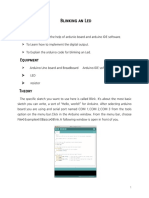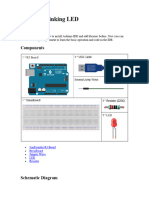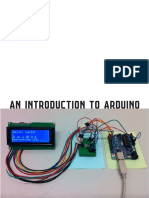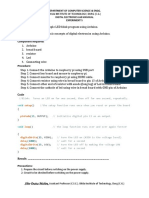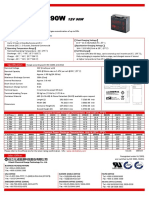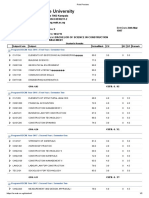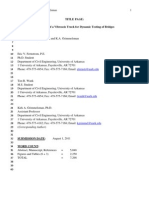0% found this document useful (0 votes)
272 views6 pagesLED Blinking With Arduino Uno
The document describes how to blink an LED connected to an Arduino Uno board using a few lines of code. The code uses pinMode() to set the pin connected to the LED as an output. It then uses digitalWrite() and delay() in a loop to turn the LED on for 1 second, off for 1 second, blinking it on and off. Connecting an LED requires using a resistor in series with the long leg of the LED connected to a digital pin, and the short leg to ground.
Uploaded by
Junalyn Angsa BanquerigoCopyright
© © All Rights Reserved
We take content rights seriously. If you suspect this is your content, claim it here.
Available Formats
Download as DOCX, PDF, TXT or read online on Scribd
0% found this document useful (0 votes)
272 views6 pagesLED Blinking With Arduino Uno
The document describes how to blink an LED connected to an Arduino Uno board using a few lines of code. The code uses pinMode() to set the pin connected to the LED as an output. It then uses digitalWrite() and delay() in a loop to turn the LED on for 1 second, off for 1 second, blinking it on and off. Connecting an LED requires using a resistor in series with the long leg of the LED connected to a digital pin, and the short leg to ground.
Uploaded by
Junalyn Angsa BanquerigoCopyright
© © All Rights Reserved
We take content rights seriously. If you suspect this is your content, claim it here.
Available Formats
Download as DOCX, PDF, TXT or read online on Scribd
/ 6


















